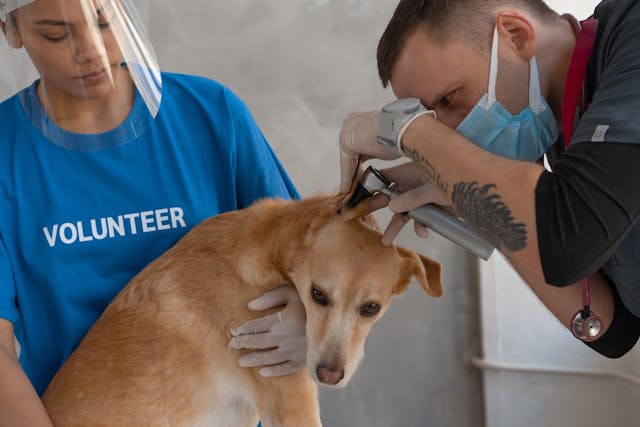Running a pet care business means more than just offering grooming, daycare, or veterinary services—it also means creating a clean, safe, and pest-free environment where animals can thrive. From fleas and ticks to rodents and roaches, pests pose serious health risks to both pets and people. Left unchecked, even a minor infestation can damage your reputation, endanger your clients, and disrupt your day-to-day operations.
Whether you operate a grooming salon, kennel, veterinary clinic, or pet daycare, pest control should be a top priority. Here’s what every pet care business needs to know to keep their facility clean, protected, and operating at the highest standards of safety and hygiene.
Why Pest Control Matters in Pet Care Settings
Pests in pet care facilities are more than just a nuisance—they’re a threat. Fleas and ticks can transmit diseases to both animals and humans. Mice and rats can chew through wires, contaminate food supplies, and spread dangerous bacteria. Even insects like ants and flies can compromise the sanitary conditions you work so hard to maintain.
For pets with sensitive immune systems, such as young puppies or senior animals, the risk is even greater. One flea-infested pet or one unsealed trash bin can lead to a full-blown issue that affects every animal in your care. Preventing pest infestations is part of responsible animal care—and an essential part of maintaining client trust.
Common Pests Found in Pet Care Facilities
Some pests are more common in pet care environments than others. Understanding what you’re up against can help you take proactive measures to prevent infestations.
Fleas are one of the most common problems. They thrive in warm, moist environments and can quickly spread from one animal to another. Even if pets are treated regularly, fleas can hide in bedding, rugs, and cracks in flooring.
Ticks are another concern, especially in daycare or boarding facilities with outdoor play areas. Ticks latch onto animals and can carry serious diseases such as Lyme disease and ehrlichiosis.
Rodents, particularly mice and rats, may be attracted to pet food, water bowls, or unswept crumbs. They tend to nest in quiet corners or storage areas and can pose serious sanitation and structural risks.
Flies and ants are typically drawn to waste bins, food prep areas, and water bowls. While they may seem harmless, they can spread germs and irritate pets and staff alike.
Cockroaches often hide in dark, moist areas like drains or under sinks. They’re especially difficult to eliminate once they’ve found a place to settle.
Cleanliness is the First Line of Defense
Cleanliness is non-negotiable in any pet care setting, but it’s especially crucial for pest prevention. Daily cleaning routines should go beyond visible dirt and include disinfecting surfaces, washing bedding, emptying trash, and checking for signs of pests in hidden corners.

Pet food should always be stored in sealed containers, and water bowls should be emptied and cleaned regularly. Waste should be removed promptly, and trash bins should be tightly sealed and emptied before the end of the day.
Floors, walls, and baseboards should be checked and cleaned thoroughly, as many pests can nest in crevices or under loose tiles and mats. Grooming tools and equipment should be sanitized after each use, and laundry should never sit damp for long periods.
Structural and Environmental Controls
Pest prevention also depends on how your facility is built and maintained. Small repairs and regular inspections can make a huge difference in keeping pests out.
Seal any cracks or holes in walls, floors, and windows. Repair damaged screens and door seals that might allow pests to enter. Pay special attention to plumbing fixtures and floor drains—moisture is one of the biggest attractants for pests.
Ventilation systems should also be inspected and cleaned periodically, as buildup can create a breeding ground for insects and bacteria. Outdoor play areas should be maintained regularly, with trimmed grass, clean-up protocols, and limited access to stagnant water or decaying vegetation.
If your facility handles overnight boarding, special attention should be given to temperature and humidity control, which not only supports pet comfort but also deters certain insects and parasites.
Partnering with a Licensed Pest Control Service
Even with the best cleaning and maintenance habits, some pest issues require professional help. Partnering with a licensed pest control provider who understands the unique needs of pet care environments is essential.
Choose a company that uses pet-safe treatments and understands which products and techniques are appropriate around animals. Regular inspections and preventative treatments can stop infestations before they start—and give you peace of mind that your facility remains clean and secure.
A good pest control partner will also help train your staff on what to look for, what to report, and how to respond quickly to potential problems.
Staff Training and Protocols
Your staff is on the front line when it comes to spotting and responding to pest issues. Regular training should include how to identify signs of infestations—such as flea dirt, pest droppings, gnawed materials, or unusual pet behavior.
Team members should also know the proper sanitation routines, how to store and dispose of food and waste, and how to escalate concerns to management. Everyone should be responsible for checking their assigned areas daily and reporting anything unusual.
Having clear protocols in place ensures that issues are dealt with quickly, reducing the risk of a small problem becoming a major outbreak.
Communication with Pet Owners
If a pest-related issue does arise—or if pets show signs of fleas or ticks during their visit—communicating with pet owners is key. Letting them know the steps you’re taking to protect their pets shows professionalism and transparency.
Many pet care businesses include pest control policies in their intake forms or client agreements. Requiring pets to be on flea and tick prevention before services can help reduce exposure risks. Being proactive about these expectations keeps everyone safer and prevents uncomfortable conversations later on.
Final Thoughts
Protecting pets from pests is a vital part of running a responsible and reputable pet care business. From regular cleaning to professional pest control partnerships, your efforts create a safer, healthier space for the animals—and the people—who rely on you every day.
A pest-free facility isn’t just about cleanliness—it’s about trust. And in an industry built on care and compassion, that trust is everything. By prioritizing pest prevention, you protect your clients, your staff, your reputation, and—most importantly—the pets at the heart of your business.
